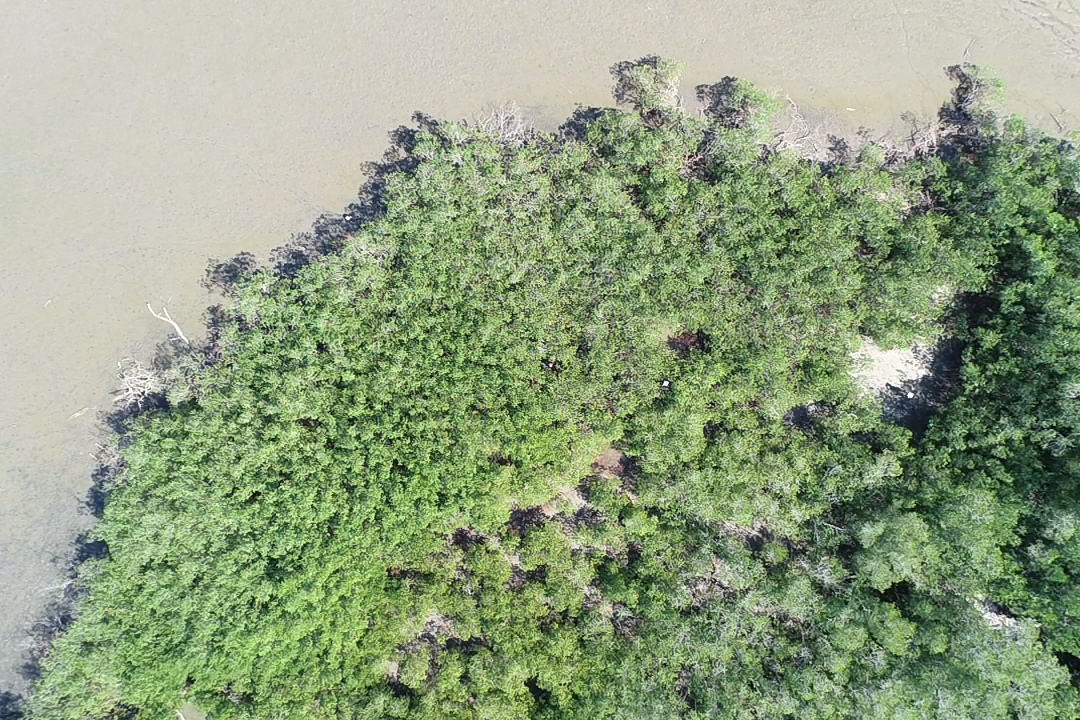IHCantabria proposes an integrated formula to estimate wave energy attenuation in Rhizophora mangrove forests
The results of the study, developed in Costa Rica, contribute to the understanding of mangrove-wave interactions. This has great implications, because it will allow the development of sustainable coastal management practices in the communities where these ecosystems are located.
An international research team, integrated by three representatives of the Institute of Environmental Hydraulics of the University of Cantabria(IHCantabria), has developed a study that presents a formulation to improve the estimation of wave attenuation by Rhizophora mangrove forests.
The paper is published in the journal Frontiers in Marine Science and develops a new drag coefficient formulation based on a comprehensive review of the state of the art complemented by a field campaign.
Mangroves are ecosystems located in tropical and subtropical regions, which offer several benefits, such as carbon sequestration, habitat provision and coastal protection. However, being able to accurately assess their ability to attenuate wave energy is a challenge, due to the complex interaction of these forests with the hydrodynamics to which they are exposed.
Previous research has conducted laboratory tests to estimate the wave attenuation produced by mangrove forests. Rhizophora providing formulations that relate its physical characteristics to wave conditions and resulting in estimates of the drag coefficient, a coefficient used as a calibration coefficient in numerical models used to quantify the attenuation of energy produced by these ecosystems. However, these results have not been validated with field data and these studies do not consider the variability in the physical characteristics of the forest along its profile.
Through a meticulous field campaign, carried out in a forest of Rhizophora sp. in Costa Rica, researchers characterized the mangrove structure and measured wave conditions for 23 continuous days. Key findings include a 34% reduction in the height of incident waves along the 63 meters of the monitored forest and a new formulation that allows estimating the protection capacity of these ecosystems.
The main author of the study is Fernando López Arias, who is linked as a predoctoral researcher to the Climate Risk, Adaptation and Resilience Group at IHCantabria, where his thesis directors and co-authors of the article, María Maza Fernández and Javier L. Lara, also work. The other co-authors are Felipe Calleja and Georges Govaere, members of the Marine, River and Estuarine Engineering Unit (IMARES) of the University of Costa Rica.
Arias highlights the contribution of this study, because “in addition to advancing the understanding of wave attenuation in mangroves, it also provides a new tool to reliably quantify their coastal protection service, so that they can be considered as resilient solutions within coastal adaptation plans to the effects of climate change”.
Therefore, this study represents a “significant” step towards bridging the gap between laboratory experiments and field applications in mangrove research. “By improving our understanding of the interactions between mangrove forests and flow, the results of this study feed the numerical tools we use to quantify the protective service provided by these ecosystems and thus favor the implementation of nature-based solutions that build on this protective capacity” states researcher Maria Maza.
The content of the article published in the journal Frontiers in Marine Science can be accessed through the following link: https://doi.org/10.3389/fmars.2024.1383368

Researcher Fernando López Arias, during a field campaign in a forest of Rhizophora sp. in Costa Rica

Panoramic image of Rhizophora mangrove forests in Costa Rica.



